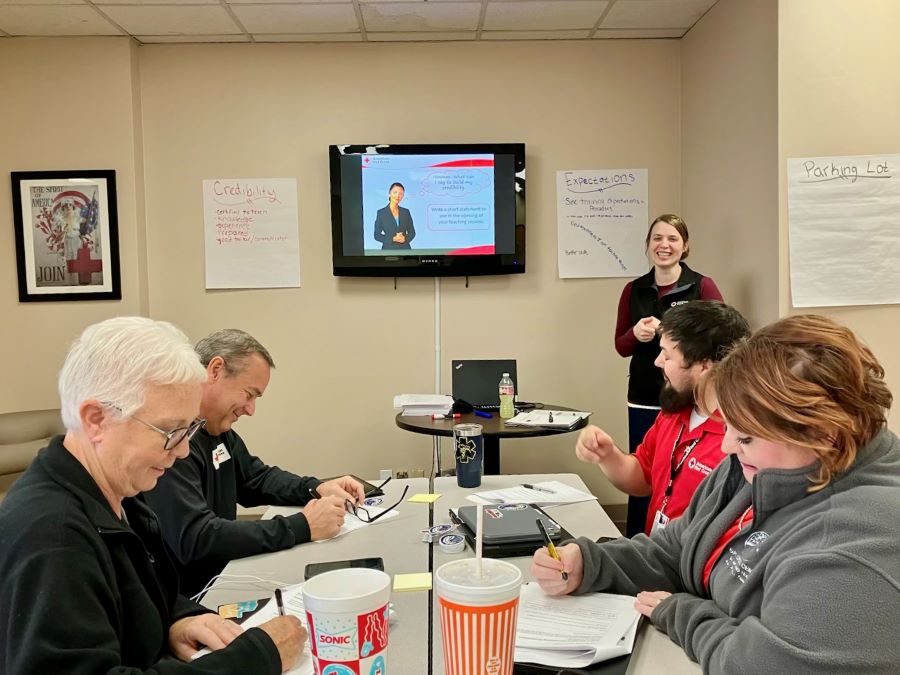
Senior Disaster Program Manager Shawnee Montgomery leads a session during the Kansas-Oklahoma Region’s recent Basic Instructor Specialty Training class.
It is widely known that the American Red Cross offers a wide spectrum of disaster preparedness, response and recovery training, such as the Pillowcase Project and Shelter Fundamentals. But many may not give much thought to the training and support that the Red Cross gives to the instructors leading these sessions—or, to put it another way, training the trainers.
That’s one of the jobs of Shawnee Montgomery, a Senior Disaster Program Manager for the Kansas-Oklahoma Region. She and others lead Basic Instructor Specialty Training (BIST), to certify Red Cross instructors, ensuring that that they are both competent and comfortable in presenting consistent information to disaster training students.
“We have this training so everyone who becomes an instructor has the same skill sets,” Montgomery said. “It’s also a way for us to make sure that the people we’re putting out there are qualified and have been able to do a good job with the materials.”
Montgomery, who lives in Manhattan, Kansas, has been with the Red Cross for approximately two years and was previously a disaster response volunteer for about a year and a half. She says she loves the humanitarian mission of the Red Cross and jumped at the opportunity to join the organization when her current position came open. One of the challenges Montgomery says she faces is the constant need for additional trainers.
“We are always looking to do more in-person classes for our volunteers and community partners in local areas instead of doing virtual ones,” she said. “We want to build a strong cadre of instructors across the entire region.” She added that—to borrow sports terminology—having a “deeper bench” of qualified instructors would make it less necessary for trainers to travel great distances across the two-state region.
One of the ways BIST helps prepare future trainers is through a process known as “teach-back.” Instructors-in-training are paired with a partner and given some training materials that they are to deliver in a 15-20 minute presentation to the entire class.
“You are kind of thrown a little bit out of your comfort zone to teach a subject you may not know a whole lot about,” Montgomery said.
In addition to giving BIST students experience, she says the teach-back gives them useful feedback from their peers. “I think it helps toward building confidence.”
Persons interested in becoming a Red Cross instructor should first sign up to become a disaster volunteer by going online to redcross.org/volunteer, or call 1-800-RED-CROSS for more information.
About the American Red Cross:
The American Red Cross shelters, feeds and provides comfort to victims of disasters; supplies about 40% of the nation’s blood; teaches skills that save lives; distributes international humanitarian aid; and supports veterans, military members and their families. The Red Cross is a nonprofit organization that depends on volunteers and the generosity of the American public to deliver its mission. For more information, please visit redcross.org or CruzRojaAmericana.org, or follow us on social media.
Support all the urgent humanitarian needs of the American Red Cross.
Find a drive and schedule a blood donation appointment today.
Your time and talent can make a real difference in people’s lives. Discover the role that's right for you and join us today!